Lift Pit Waterproofing
Service
Services
Contact For Services
Total Specialist Maintenance Ltd (TSM) is a leading specialist contractor Driven to exceed expectation!
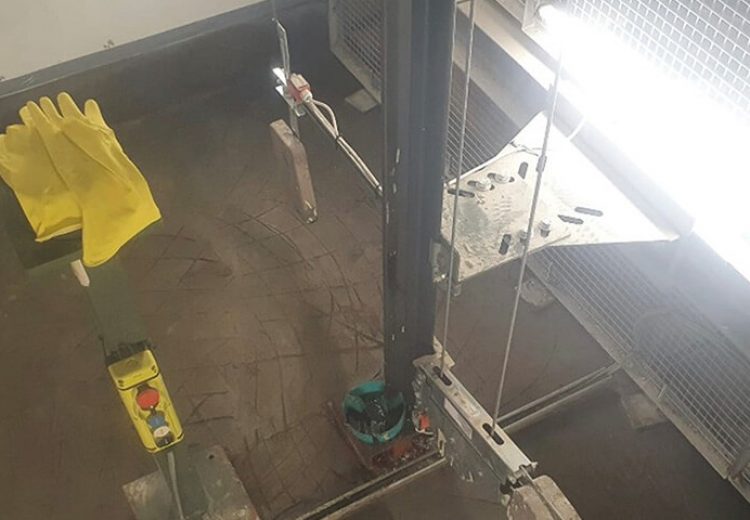
Lift Pit Waterproofing
Total specialist maintenance provide leak sealing resin injection waterproofing and waterproof tanking services to lift pits and below ground structures for various market sectors on a national basis
Stopping water leaks
A common configuration of a lift shaft is to accommodate a ground floor level which means there is a need for a lift pit. They are designed as extra space for the lift to sit while the doors align with ground floor level. The lowest part of the lift shaft is designed to withstand any underground water leaks. These pits can become susceptible to water ingress and the need for lift pit waterproofing.
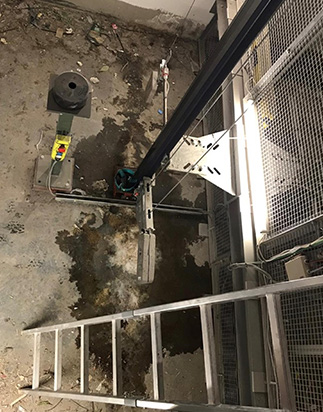
Consequences Of Water Ingress To The Lift Pit
Water in the lift pit can lead to Health & Safety issues and costly lift breakdowns.
Any water in the lift pit can affect the lift mechanism and electrical systems, which may lead to the lift breaking down. If the water touches the lift’s electrical items, the situation can become very dangerous. Corrosion of essential lift parts is potentially a risk to health and safety. The damage to the lift mechanism and the electrical system can result in costly repairs.
The water in the lift pit may be contaminated by oil and grease from the lift equipment, so a sump pump is not recommended unless the disposal of any water from the pit is performed in line with environmental regulations.
Even if a lift pit is fitted with a sump pump, during heavy rain, the water may not be able to disperse due to storm drains and sewers being under extreme strain, causing pits to back up.
Furthermore, a build-up of condensation and stagnant water in the lift pit may produce a foul smell described as a ‘rotten egg’ odour, which is caused by hydrogen-sulfide gas resulting from anaerobic decomposition. This does not only smell bad, but it can be hazardous to lift technicians and maintenance contractors. Any repair works would require trained and qualified confined space entry personnel using gas exposure monitors that can detect the presence of the substance.
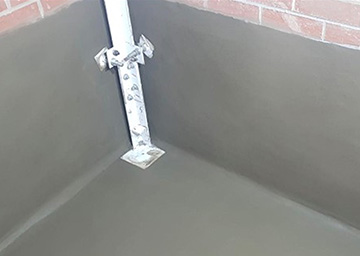
Why Does Lift Pit Waterproofing Fail So Often?
A common problem with lift shafts is groundwater ingress into the lift pit area. We often discover that the source of water ingress into lift pits are due to:
- Incorrectly installed or damaged waterproofing system.
- The pit is too old for any effective waterproofing system to have been originally installed.
- Floor/wall joint acts as a passageway for water ingress.
- Defects and cracks in walls and floor that have evolved over the years, sometimes caused by movement.
- Deteriorated construction components.
- Altered water table levels.
Lift pits are like mini basements because they are almost always below ground. The design of a lift pit should be considered as an integral part of the structure/building design and waterproofed to prevent water ingress.
Lift pits are vulnerable to rising water table levels, especially during the wet season. The water table can be altered by adjacent construction, so a lift pit that used to be dry can now be at risk of water intruding the structure. Water can enter the lift pit via construction joints, cracks in the walls or floor. Water has a way of finding a way through any weak points following the path of least resistance. Once water has entered the lift pit, it will pool on the floor and keep rising, usually until it has reached the height of the water table.
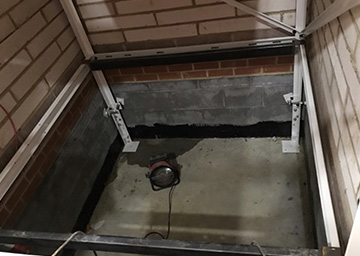
How Can Total Specialist Maintenance Help Keep Your Basement and Lift Pit Dry and Prevent Moisture From Making Its Way In?
Wall to floor joints in infill slabs and retaining walls and service pipe penetrations often act at basement leakage points. This can cost-effectively be remediated. Water that enters through access points can be tricky to successfully seal and patching things up rarely works. A wet basement/lift pit can be treated by targeted high-pressure polyurethane injection into the wall-floor joint and/or into vertical joints, crack and penetrations. The injected hydrophilic polyurethane liquid chases the water deep into cracks and forms a flexible watertight seal. This remedial waterproofing treatment can be followed by the application of a waterproof tanking mortar.
Total specialist maintenance is the go-to company for many Defect managers, maintenance managers and aftercare Managers working for major construction companies across The United Kingdom. Total Specialist maintenance also work for all the major lift installation companies and lift maintenance and service companies across the United Kingdom
We can turn damp, leaking lift pits, lift shafts and basements dry and safe again. Total Specialist maintenance has the technical and practical expertise to diagnose the source of the leak. Total specialist maintenance is an approved contractor of all of the major Leak sealing resin injection waterproofing material manufacturers’ product ranges, As an approved contractor, Total specialist maintenance selects the most appropriate materials and design solution providing a cost-effective engineered package.
We believe in and are committed to always delivering high-quality solutions by utilising the right products and techniques for each specific project combined with our industry-leading know-how on tap. We have a large talent pool of specialist leak sealing and concrete repair technicians that are extensively trained in our systems and project execution methods.
The leadership positions on every Waterstop Solutions project are operated by highly qualified, certified and experienced industry professionals. Our in-house skills and expertise gained from years of industry experience provide a full range of high-quality remedial waterproofing and concrete repair works to commercial buildings, civil infrastructures, industrial sites and residential properties. From waterproofing diagnostics to preventative and remediation solutions – All of our waterproofing solutions are guaranteed.
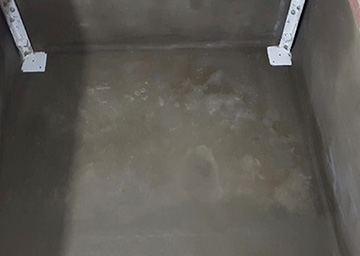
Sectors
- Aviation Industry, Bridges and Tunnels, Buildings, Construction Industry, Education, Food And Drink Industry, Health Care, Heritage And Listed, Highways, Hotel and Leisure, Local Authorities, Marine Structural Refurbishment, Ministry of Defence, Multi-storey Car Park, Nuclear, Petrochemical Industry, Pharmaceutical Industry, Rail, Social Housing, Water Industry
Benefits
Directly Employed Workforce
Highly Skilled and Experienced Operatives
Certified Training
All operatives are PTS trained
Accreditations




Frequently
Ask Questions
Technical Questions About
Lift Pit Waterproofing
Frequently asked questions about Total Specialist Maintenance lift pit waterproofing i for domestic, construction, Commercial, pharmaceutical industry, health care, heritage sector rail, local authorities and infrastructure sectors and technical queries regarding lift pit waterproofing
For any additional information that is not listed please contact our technical team
Waterproofing lift pits is essential in maintaining their usability, as water in the pit can cause the parts within shaft to corrode or cause electrical parts to degrade/ or to come water damaged. Some lift manufacturers/engineers won’t allow for any moisture to be present in the lift pit.
Typically, lift pits are waterproofed by applying a waterproof membrane or coatings or bentonite based membrane under the slab and on the exterior of the pit walls. These acts as barriers on the surface of the concrete to prevent the penetration of water, however due to poor installation these can sometimes fail requiring an internal waterproofing solution which involves Total specialist maintenance carrying out specialist leak sealing resin injection to arrest live water ingress and then carrying out waterproof tanking to the entire lift pit.
Often situated below the floor slab, lift pits can be subject to hydrostatic pressure. They are usually small and externally tanked in difficult, wet and confined working conditions making the installation of a waterproofing system challenging, however Total specialist maintenance can offer a solution once the lift shaft has been constructed offering an internal solution carrying out specialist leak sealing resin injection to arrest live water ingress and then carrying out waterproof tanking to the entire lift pit.
Water can seep into an lift pit through the bottom or walls of the pit. This often happens in buildings with leaky foundations, especially due to cracks in the concrete.
Operating a lift when there is water near or in the lift system is dangerous. This water can cause electrical short circuits, potentially trapping someone in the lift or damaging the building electrical system.
Negative-side waterproofing is the application of a coating material to the interior or the ‘dry’ side of a foundation or wall. Its primary function is to create a barrier coat to stop water from leaking through the wall and keeping the space dry.
There are many reasons why water might start to enter an elevator pit. Here are some common issues we encounter: Nearby construction has changed or redirected the local water level. The current waterproofing system was incorrectly installed, or it was damaged during the building’s construction.